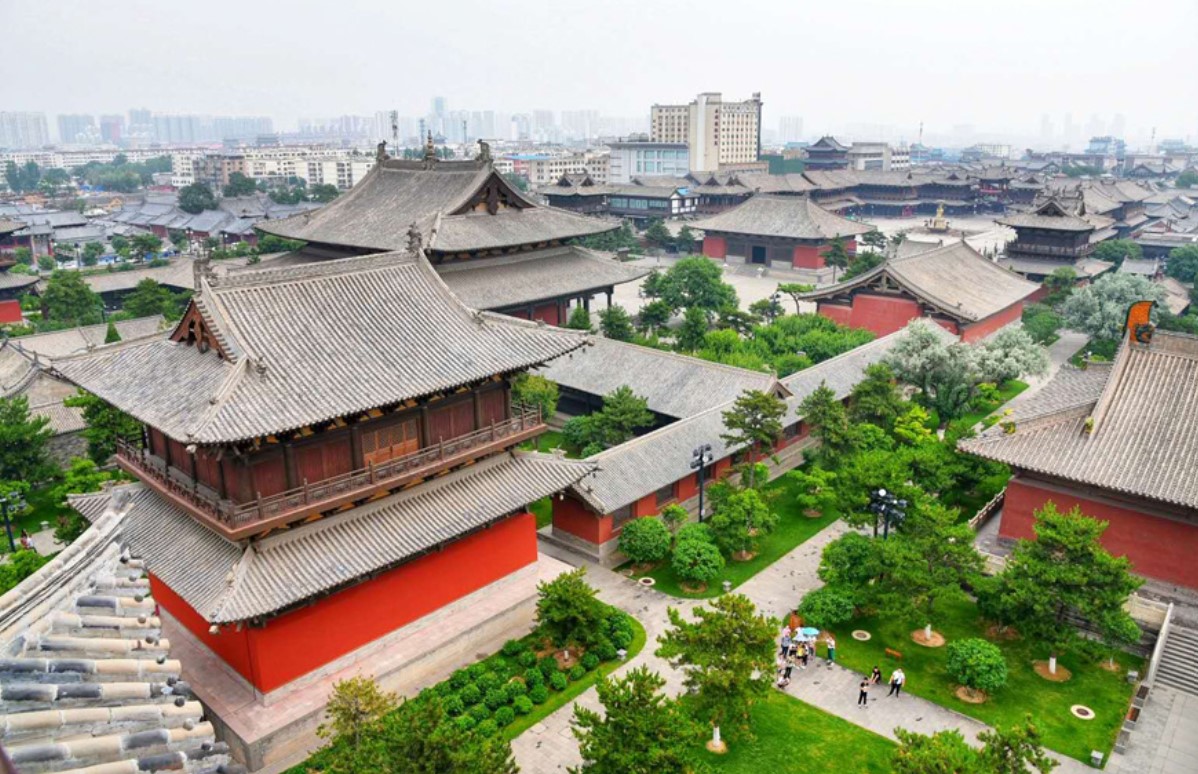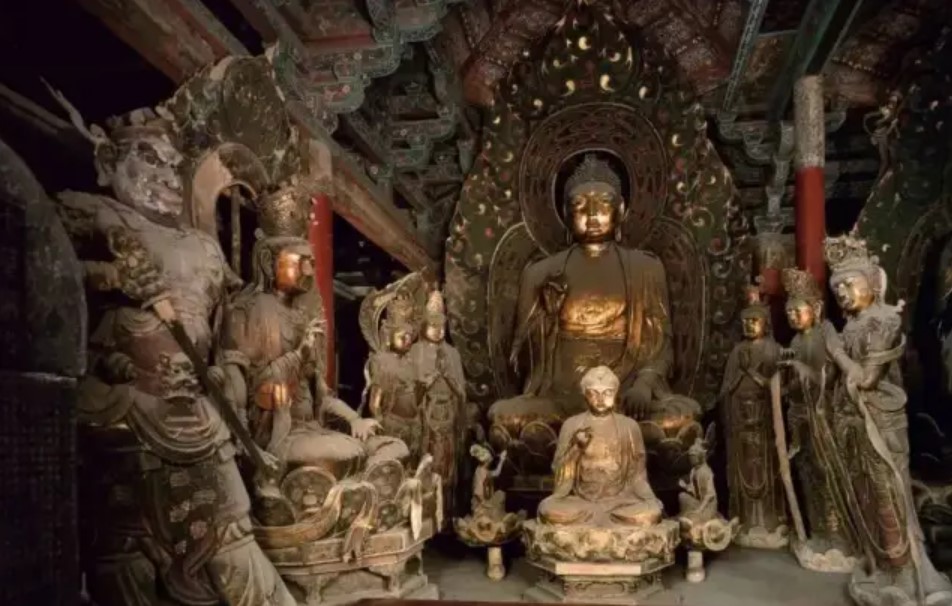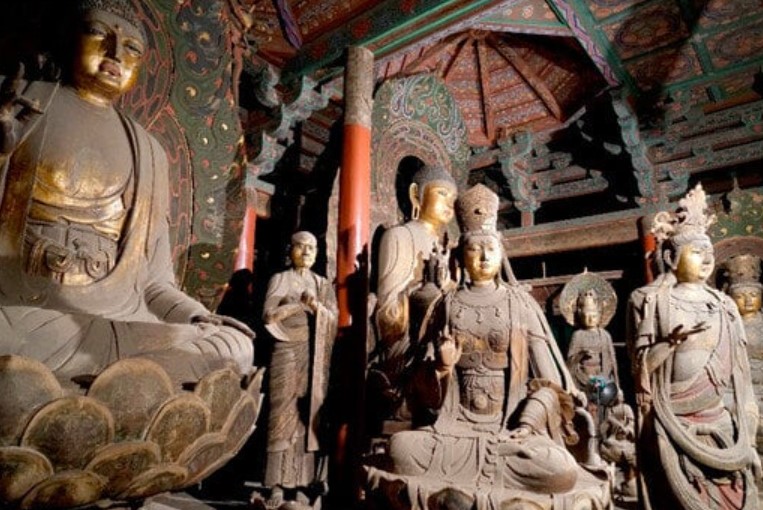Huayan Temple, located in central China, is a cultural treasure that reflects the country’s diverse heritage. Famous for its vibrant statues and intricate murals, the temple is a testament to the influence of many different ethnic groups and cultures throughout history. The temple’s walls and artwork tell stories of artistic development and spiritual devotion, making it a must-see for anyone interested in cultural history. Follow archeology.dulichvn.net to learn more about this fascinating place.
Huayan Temple: An Everlasting Haven
Historical Significance of Huayan Temple
Huayan Temple, also known as 华严寺, dates back centuries and serves as a spiritual center for Buddhism in China. Its foundation and subsequent renovations represent the country’s rich history and its ability to assimilate various cultural elements.

A Symbol of Multicultural Integration
The temple has witnessed the blending of different cultural influences, particularly during eras of ethnic interaction and exchange. These influences are evident in its architectural design and artistic elements, showcasing the harmony between diverse traditions.
See more: The Pantheons Bronze Doors Oldest Door Still in Use in Rome
Preservation Over the Ages
Despite being centuries old, Huayan Temple remains remarkably well preserved. Continuous restoration efforts ensure its murals and statues retain their vibrancy, allowing future generations to appreciate this historical gem.
The Colored Statues in Huayan Temple
Vivid Artwork with Cultural Significance
The colored statues in Huayan Temple are a marvel of craftsmanship. These statues depict various Buddhist deities, each adorned with intricate details and vibrant hues. The use of color and symbolism reflects the spiritual beliefs and artistic mastery of the time.

Techniques Passed Through Generations
The creation of these statues involved advanced techniques, some of which have been passed down through generations. Artists used natural pigments to bring the figures to life, achieving durability and brilliance that withstands the test of time.
A Journey Through Buddhism
Each statue tells a story, offering insights into Buddhist teachings and practices. Visitors can explore these sculptures to gain a deeper understanding of Buddhism’s role in shaping Chinese culture.
See more: The Ancient Marvel of Sacsayhuaman A Monument of Engineering Brilliance
Murals at Huayan Temple: A Living Canvas of History
Cultural Fusion in the Murals
The murals at Huayan Temple are a testament to the cultural exchanges between different ethnic groups over the centuries. They incorporate elements from Han, Tibetan, and other regional artistic styles, creating a unique blend of visual narratives.

Themes and Stories Depicted
These murals depict a wide range of themes, from religious tales to scenes of daily life. Some portray Buddha’s journey, while others capture moments of historical significance, offering a glimpse into ancient Chinese society.
Artistic Techniques and Restoration
The murals showcase advanced artistic techniques, including the use of natural pigments and fine brushwork. Restoration efforts have preserved these masterpieces, ensuring their vibrant colors and intricate details remain intact.
Visiting Huayan Temple
Key Highlights for Tourists
Visitors to Huayan Temple can admire its vibrant statues and murals, explore its serene courtyards, and participate in traditional Buddhist ceremonies. These experiences provide a deeper connection to the temple’s spiritual and cultural essence.

Best Time to Visit
The ideal time to visit Huayan Temple is during the spring or autumn seasons, when the weather is pleasant and the temple grounds are surrounded by blooming flowers or golden foliage.
Tips for Exploring the Temple
- Take a Guided Tour: Learn about the temple’s history and artistic elements from knowledgeable guides.
- Respect Local Customs: Dress modestly and maintain a respectful demeanor during your visit.
- Capture the Moment: Photography is allowed in many areas, so don’t forget to bring a camera to document your experience.
The Enduring Legacy of Huayan Temple
A Cultural Bridge Across Time
Huayan Temple stands as a bridge between ancient and modern times, preserving the cultural genes of multiple ethnic groups. Its vibrant artwork continues to inspire awe and admiration, drawing visitors from all over the world.

Inspiring Future Generations
The temple’s ability to adapt and integrate diverse cultural influences serves as a lesson in unity and resilience. It reminds us of the importance of preserving our heritage while embracing change.
A Testament to Human Creativity
Huayan Temple is not just a religious site; it is a monument to human creativity and dedication. Its statues and murals are timeless works of art that celebrate the intersection of spirituality and culture.
Conclusion
Huayan Temple is a living testament to China’s rich and diverse cultural history. Its colored statues and murals offer more than just visual beauty—they tell stories of integration, resilience, and artistic mastery. Whether you are a history enthusiast, an art lover, or a spiritual seeker, a visit to Huayan Temple promises an unforgettable journey into the heart of China’s cultural heritage.

CÁC TIN KHÁC
Mark Twain & Olivia Langdon: A 36-Year Love Story Filled with Laughter and Devotion
The Tollund Man: A 2,400-Year-Old Mystery Preserved in a Danish Bog
Skara Brae: Scotland’s Hidden Neolithic Village
Porta Nigra: The Hidden Depths of Trier’s Iconic Roman Gate